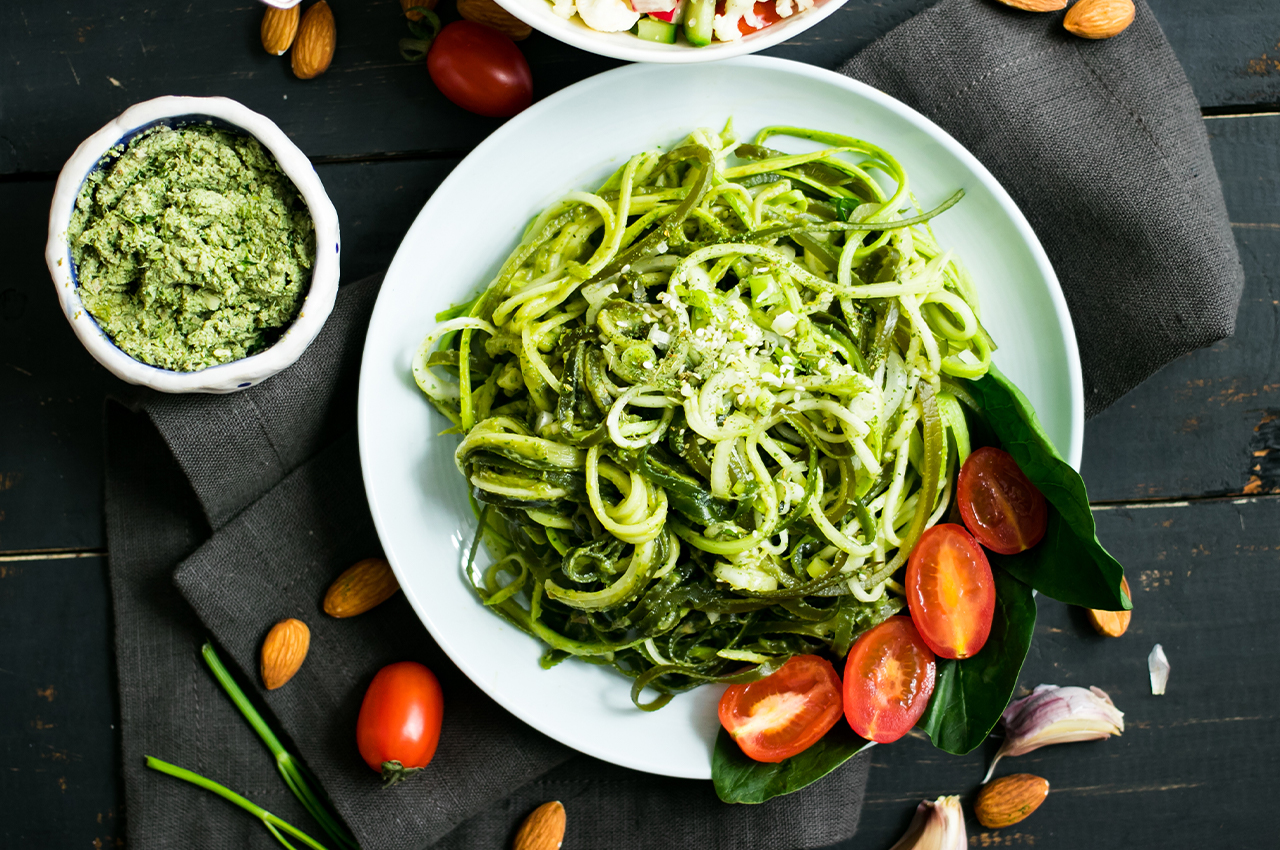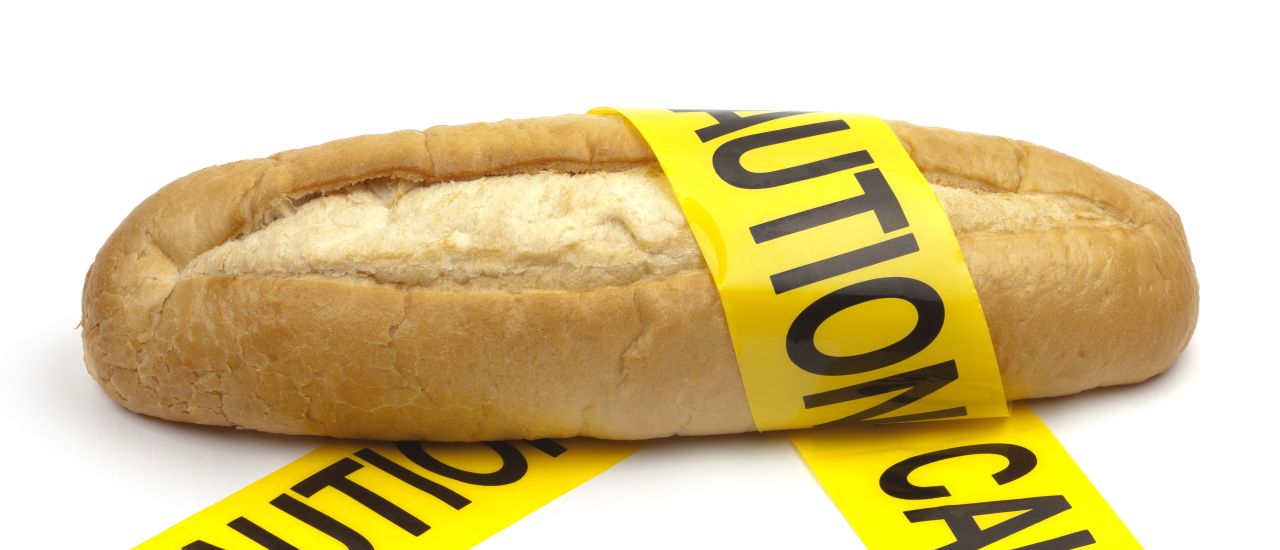There are many low-carb alternatives to pasta like fresh vegetables and popular fibre-rich noodle replacements. These not only contain fewer carbs but have higher levels of vitamins, minerals and other beneficial nutritional compounds than traditional pasta.
Give these recipes a go for a punch of tasty and healthy goodness.
Cheesy bacon spaghetti squash
Ingredients
- 1 large spaghetti squash (also known as calabash squash)
- 4 bacon strips, chopped
- 3 tbsp butter
- 1 tbsp brown sugar
- ½ tsp salt
- ¼ tsp pepper
- ½ cup shredded Swiss cheese
Method
- Halve squash lengthwise and discard seeds. Place squash on a microwave-safe plate, cut side down; microwave until tender for 15-20 minutes. Cool slightly. Separate strands with a fork.
- In a large pan, cook bacon over medium heat until crisp, stirring occasionally. With a slotted spoon, place bacon on paper towels; reserve drippings.
- In the same pan, heat drippings over medium heat; stir in butter, brown sugar, salt and pepper until blended. Add squash, toss and heat through. Remove from heat; stir in cheese. Top with bacon.
Zucchini noodles with pesto & chicken
Ingredients
- 4 medium-large zucchinis, trimmed
- ¾ tsp salt, divided
- 2 cups packed fresh basil leaves
- ¼ cup pine nuts, toasted
- ¼ cup grated Parmesan cheese
- ¼ cup plus 2 tbsp extra-virgin olive oil, divided
- 2 tbsp lemon juice
- 1 large clove garlic, quartered
- ½ tsp ground pepper
- 4-5 tbsp pesto (to taste)
- 500g boneless, skinless chicken breast, cut into pieces
Method
- Using a spiral vegetable slicer, cut zucchini lengthwise into long, thin strands. Give the strands a chop here and there so the noodles aren’t too long. Place the zucchini in a colander and toss with ¼ teaspoon salt. Drain for 15 to 30 minutes, then gently squeeze to remove any excess liquid.
- Meanwhile, place basil, pine nuts, parmesan, ¼ cup oil, lemon juice, garlic, pepper and ¼ teaspoon salt in a mini food processor. Process until almost smooth.
- Heat 1 tablespoon oil in a large pan over medium-high heat. Add chicken in one layer; sprinkle with the remaining ¼ teaspoon salt. Cook, stirring, until just cooked through, about 5 minutes. Transfer to a large bowl and stir in 3 tablespoons of the pesto.
- Add the remaining 1 tablespoon oil to the pan. Add the drained zucchini noodles and toss gently until hot, 2 to 3 minutes. Transfer to the bowl with the chicken. Add the remaining pesto and toss gently to coat.
Chicken stir-fry with carrot noodles
Ingredients
- 200g chicken breast, cubed
- ½ cup coconut milk
- pepper
- 1 tbsp coconut oil
- 1½ tsp fresh ginger, minced
- 1 tsp ground cumin
- 1 tsp ground coriander
- 1 tsp ground cardamom
- 1½ cups broccoli, cut into bite-sized florets
- 1 large carrot, spiralised
- ½ tsp sea salt
- coriander, for garnish
Method
- Place the cubed chicken breast in a medium bowl. Add the coconut milk. Sprinkle a pinch of salt and pepper and stir until the chicken is covered. Refrigerate for at least 20 minutes.
- Heat the oil in frying pan over medium/high heat. Add the ginger, cumin, coriander and cardamom and cook until golden brown and fragrant, only for about 20 seconds.
- Place the chicken cubes one at a time, lightly shaking off an excess coconut milk (but still leaving the cubes coated in some milk) into the pan, reserving the leftover coconut milk for later. Cook until it’s well done, for about 4-5 minutes.
- Add in the broccoli florets and cook for 1 minute. Then, reduce the heat to medium and add in the carrot noodles and salt. Cook, stirring frequently, until the carrot noodles are tender, about 4 minutes.
- Stir in the remaining coconut milk, cook for 30 seconds and remove from heat.
- Garnish with coriander and enjoy.



